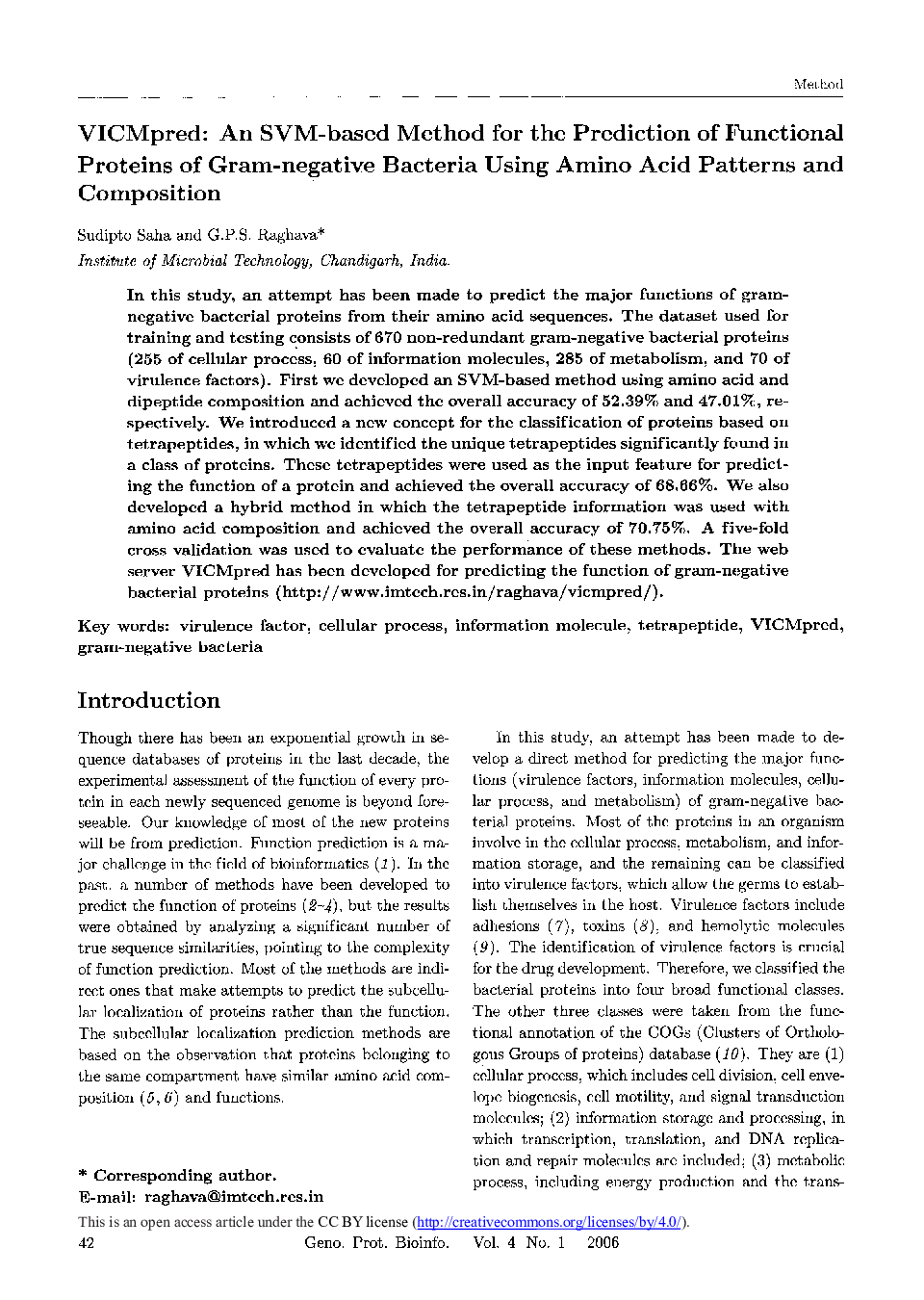| Article ID | Journal | Published Year | Pages | File Type |
|---|---|---|---|---|
| 2822786 | Genomics, Proteomics & Bioinformatics | 2006 | 6 Pages |
In this study, an attempt has been made to predict the major functions of gram-negative bacterial proteins from their amino acid sequences. The dataset used for training and testing consists of 670 non-redundant gram-negative bacterial proteins (255 of cellular process, 60 of information molecules, 285 of metabolism, and 70 of virulence factors). First we developed an SVM-based method using amino acid and dipeptide composition and achieved the overall accuracy of 52.39% and 47.01%, respectively. We introduced a new concept for the classification of proteins based on tetrapeptides, in which we identified the unique tetrapeptides significantly found in a class of proteins. These tetrapeptides were used as the input feature for predicting the function of a protein and achieved the overall accuracy of 68.66%. We also developed a hybrid method in which the tetrapeptide information was used with amino acid composition and achieved the overall accuracy of 70.75%. A five-fold cross validation was used to evaluate the performance of these methods. The web server VICMpred has been developed for predicting the function of gram-negative bacterial proteins (http://www.imtech.res.in/raghava/vicmpred/).
